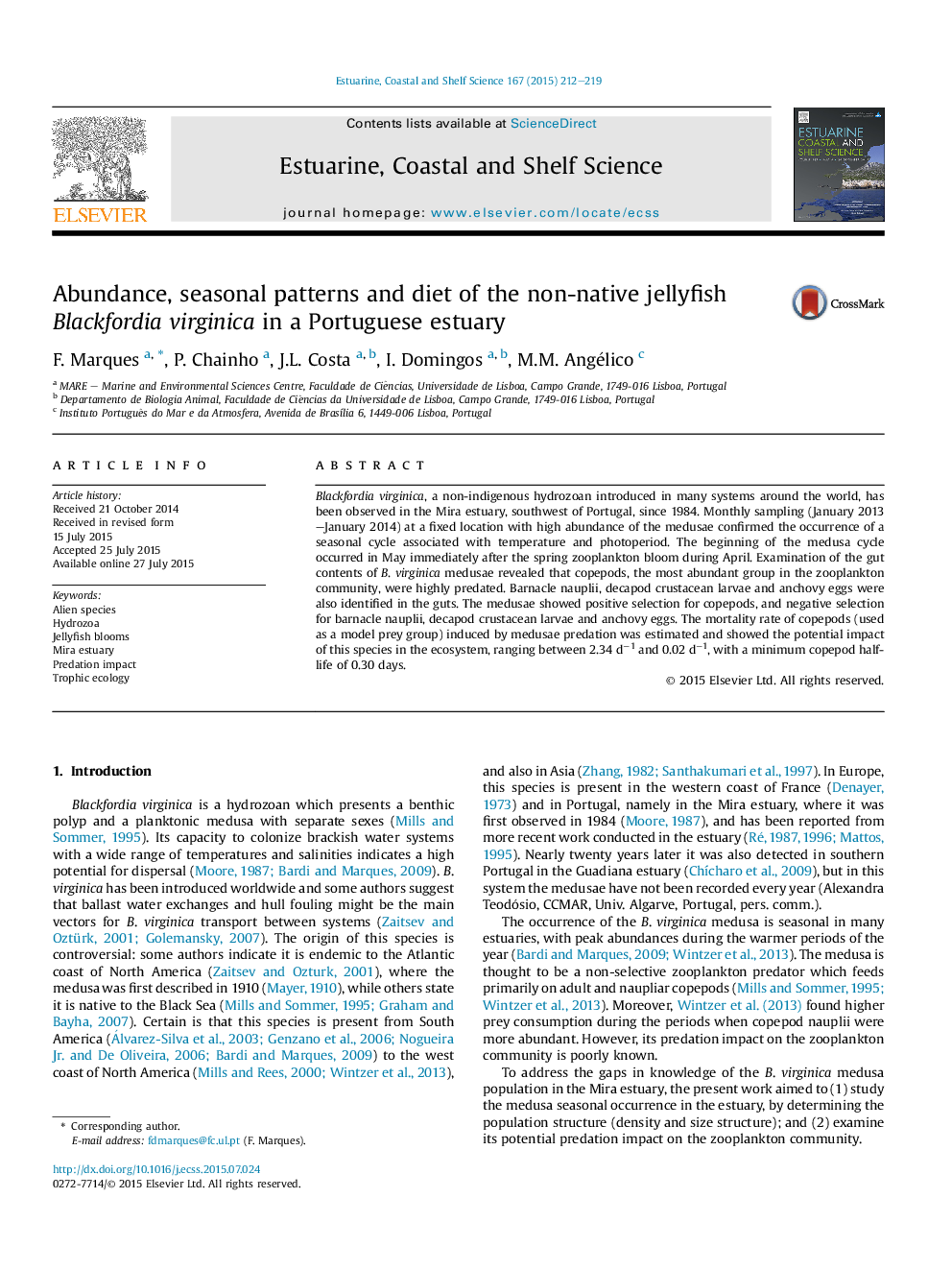| Article ID | Journal | Published Year | Pages | File Type |
|---|---|---|---|---|
| 6384580 | Estuarine, Coastal and Shelf Science | 2015 | 8 Pages |
â¢The population of the non-indigenous hydrozoan Blackfordia virginica medusa was studied in the Mira estuary, Portugal.â¢B. virginica medusae occurred seasonally in the system, from May to December.â¢Their diet included copepods, barnacle nauplii, decapod crustacean larvae and anchovy eggs.â¢The predation impact may be important and it was within the range documented for other gelatinous predators.
Blackfordia virginica, a non-indigenous hydrozoan introduced in many systems around the world, has been observed in the Mira estuary, southwest of Portugal, since 1984. Monthly sampling (January 2013-January 2014) at a fixed location with high abundance of the medusae confirmed the occurrence of a seasonal cycle associated with temperature and photoperiod. The beginning of the medusa cycle occurred in May immediately after the spring zooplankton bloom during April. Examination of the gut contents of B. virginica medusae revealed that copepods, the most abundant group in the zooplankton community, were highly predated. Barnacle nauplii, decapod crustacean larvae and anchovy eggs were also identified in the guts. The medusae showed positive selection for copepods, and negative selection for barnacle nauplii, decapod crustacean larvae and anchovy eggs. The mortality rate of copepods (used as a model prey group) induced by medusae predation was estimated and showed the potential impact of this species in the ecosystem, ranging between 2.34Â dâ1 and 0.02Â dâ1, with a minimum copepod half-life of 0.30 days.
